Half the fun of felting, whether you’re nuno, wet, or needle felting, is incorporating all those luxurious, beautiful, textural fibers other than wool. Embellishment fibers can vary widely and include cotton, silk, animal fibers, yarn, threads, linen, nylon and soooo much more. I sat down with my mom, Sharon, our in-house felting extraordinaire, to pick her brain about felting with embellishment fibers, and she was a wealth of information. For reference, let’s go over a few of our favorite fibers of each of these types.
Silk including bombyx roving, laps, throwsters (also called sari silk, sari waste, or sari threads), tussah, and fabric selvages.
Animal fibers including mohair locks, teeswater locks, angora, alpaca, wool nepps, and chunky roving.
Synthetic fibers like nylon, acrylic, and metallic threads and fabric.
Cellulose fibers like cotton cheesecloth scraps (one of our favorites!), bamboo, and tencel.
My mom’s best advice for felting with embellishment fibers? Make sure you place it all on a nice, fluffy, lofty, bed of thinly drafted wool roving. Then, veil all embellishments with a very thin layer of wool roving or silk (such as hankies or lap). Sandwiching these fibers between a lofty base, and a thin veil acts as a sort of ‘glue’ to adhere your novelty fibers to your project. Practice this method with each novelty fiber you experiment with and you won’t have to worry about your embellishments falling off.
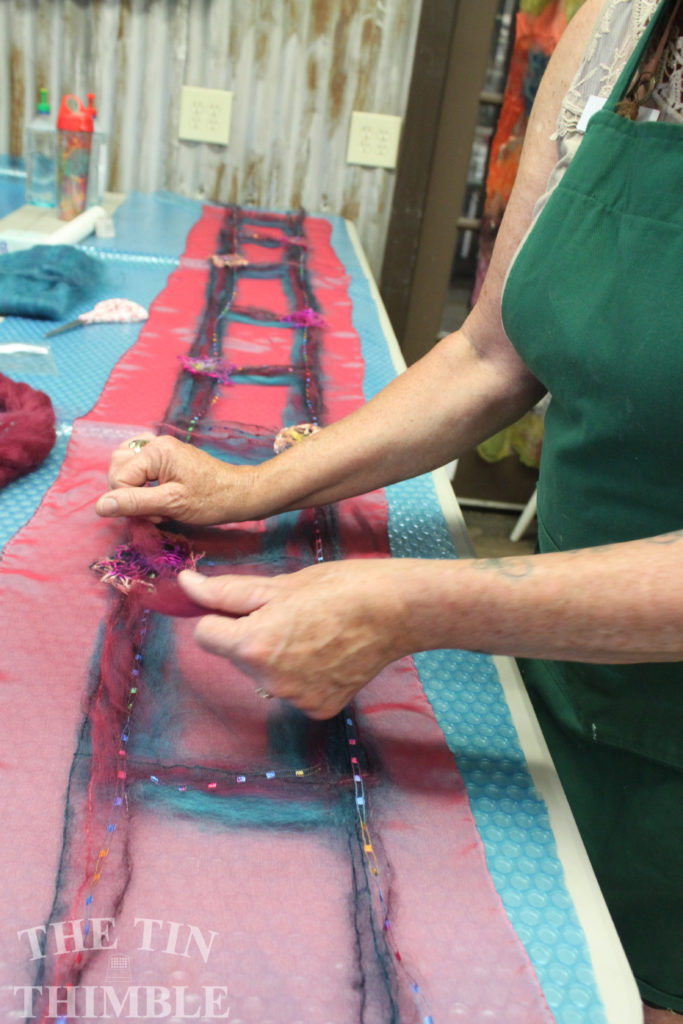
A student ‘veils’ her embellishments to keep them secure during a nuno felted scarf class at The Tin Thimble
If you’re a total beginner, practice very light drafting with both your wool roving, as this will help you create more even felt in general, and with your embellishment fibers. Avoid big globs of wool, and novelty fibers, and you’re more likely to have successful results.
This piece, above, is an example for our mini wet felted wall hanging class and is loaded with embellishment fibers. I’ll go through several of them found in this piece so that you can see the final product.
Above, our wet felted landscape piece while it was still dry. Take a moment to zoom in and look at all the different fibers incorporated here. My mom made this piece specifically to highlight different types of embellishment fibers so that her students could see what they would look like.
Silk noil, used here for clouds, also makes fantastic snow. It’s a more dense fiber than mulberry silk, with less shine, and is more opaque when felted.
Wool nepps are a byproduct of wool fabric and fiber production. They’re basically like the little pills from your favorite sweater. These little wool nubs can be hard to adhere, but are totally worth the effort. These must be laid on top of super light, fluffy wool roving. Then, veil with silk lap or wool to get them to ‘stick’. They make a great ground cover, or natural texture on pieces like pumpkins (see below) and flowers. If you want to felt a meadow, nepps are a great thing to mimic wildflowers.
Mohair locks. These are great for waves in the ocean. Kid mohair is especially nice to felt with because of it’s softness and lustre. All locks must be pulled apart a bit to increase their felt-ability, and as always, veiling will help them adhere.
When using yarn, those with thick-and-thin textures and whacky novelty yarns are the way to go. Handspun, with lots of texture, is always a winner, though they can run a bit more expensive. Our rule when it comes to felting with yarn, the nubbier and less-even or consistent, the better. Sharon has used this exact yarn, pictured above, many of her pieces. She’s used in water, soil, trees, flowers, and even to outline shapes. The beauty of yarn is that even high acrylic content yarns will felt in, they just need a little veiling.
Cotton cheesecloth, also called scrim, is one of Sharon’s favorites! She typically uses it in trees, though you’ll found it used as great generic texture in her abstract pieces as well. For trees, she advises cutting small pieces in the shape of the tree, and fraying the edges so the wool can catch it easier. This method creates a natural looking edge. See our blog post exclusively about felting with cheesecloth here.
Nylon firestar, also sometimes called angelina, is always the ‘pop’ in felt because of it’s undeniable sparkle. This fun fiber is best used in small amounts. Don’t overdo it, or we find it takes away from the rest of the textures. But hey, if sparkle is your thing, then do it up!
Silk selvedges, or strips of silk fabric are a really, really, great addition to basically any felt piece. Because wool has a matte finish, the shiny quality of silk stands out. It doesn’t sink into the wool like some other embellishment fibers do, but rather ‘floats’ on the surface creating a texture that is very much in the foreground. When choosing a silk for this, you need to keep in mind weight of silk, as really thick silk won’t felt in at all.
The purple lines on this birdhouse are our tubular yarns, one of the more unique fibers we’ve worked with and are proud to sell. These amazing yarns are literally in the shape of a tube, and can be cut up, or left whole, and felt in without an issue. Most of them are a wool blend, and many have a little bit of metallic thread or sequins in them for that added wow factor.
Below are some other finished felt examples that are loaded with different embellishment fibers. These are excellent examples of felting with embellishment fibers, and what the final product will look like.
The whole pumpkin, above, is veiled in silk laps, which create those soft squiggly lines on the surface.
What embellishment fibers have you felted with? Which are your favorites? Have questions about a fiber we didn’t cover? Please ask, comment and let us know!
As always, we’re working hard over here to provide the best quality felting supplies in our new-and-improved online store. Thanks so much for reading and for shopping with us and for your support all these years!
-Hannah and Sharon
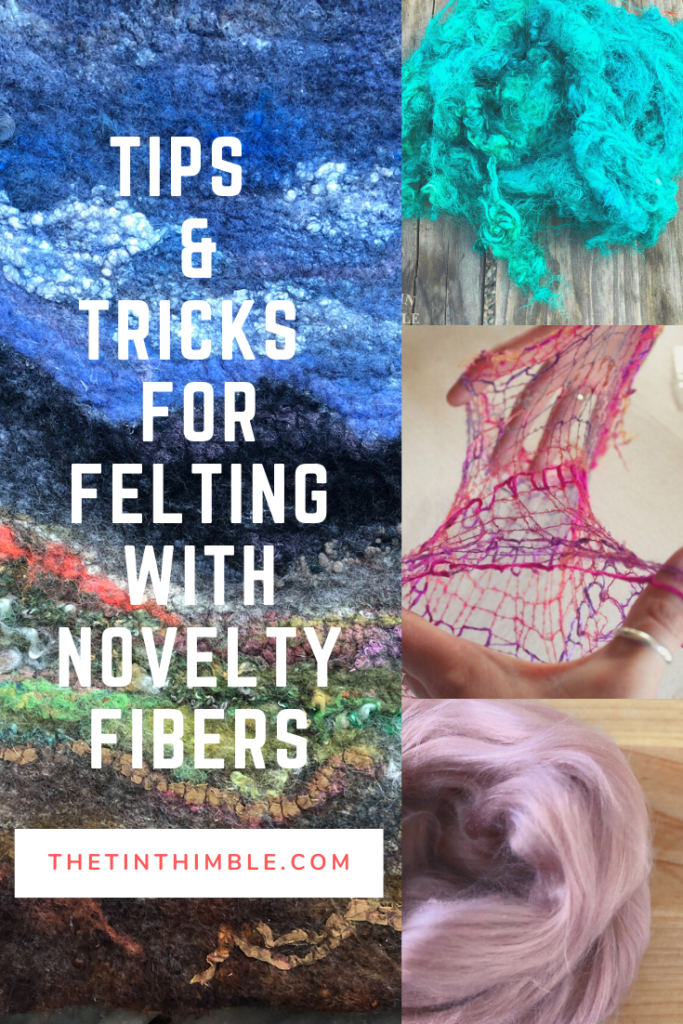
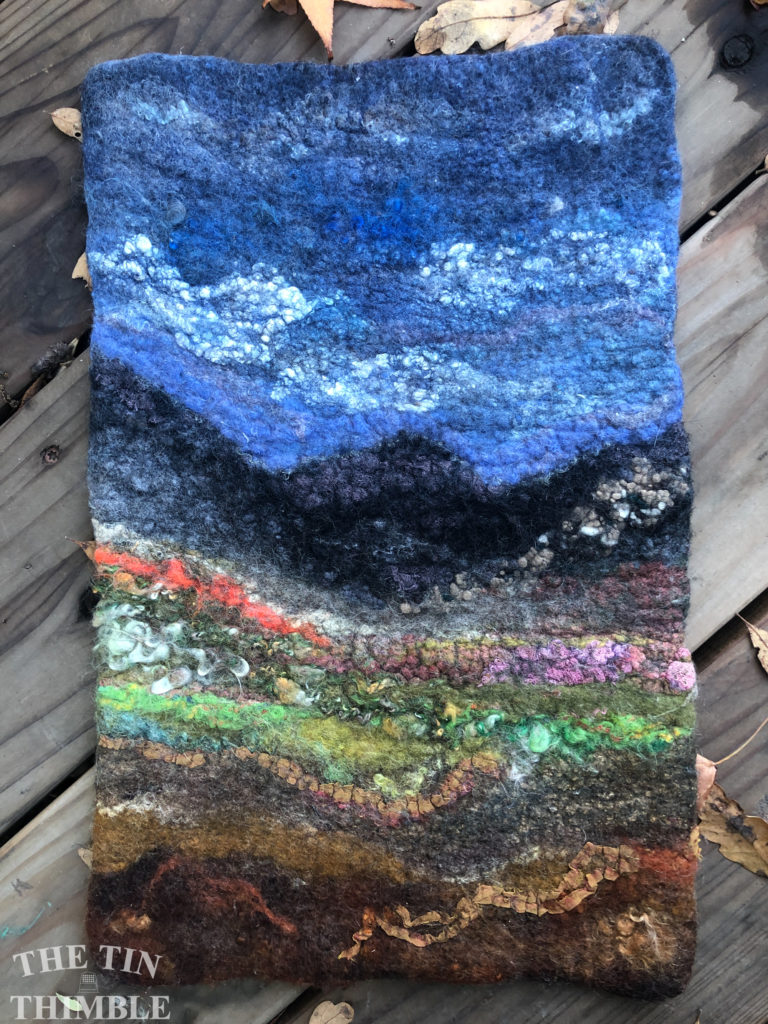
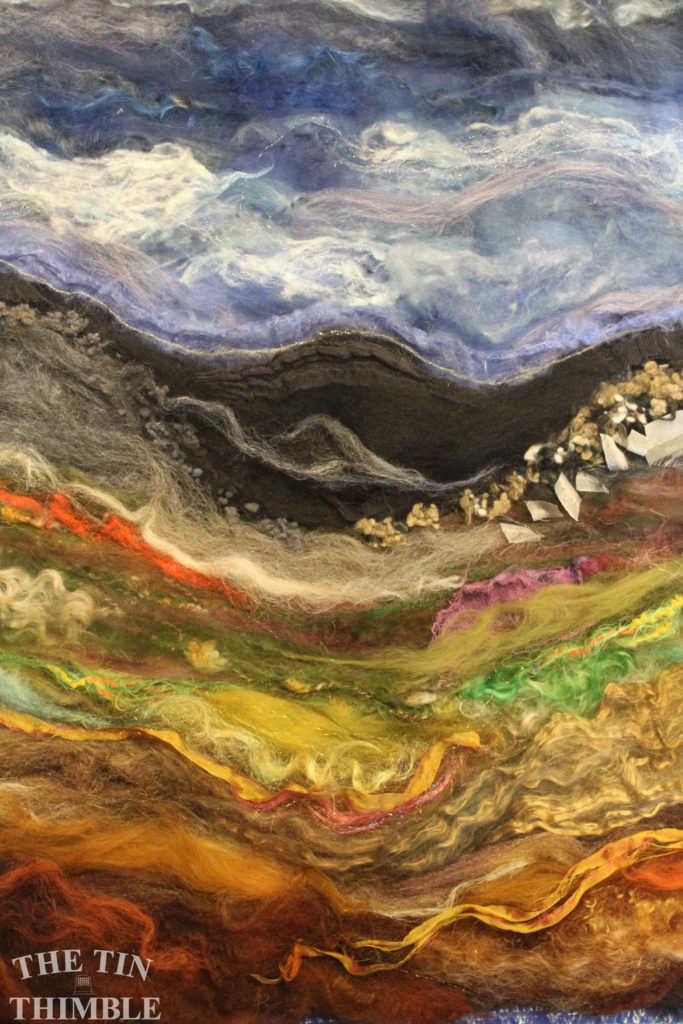
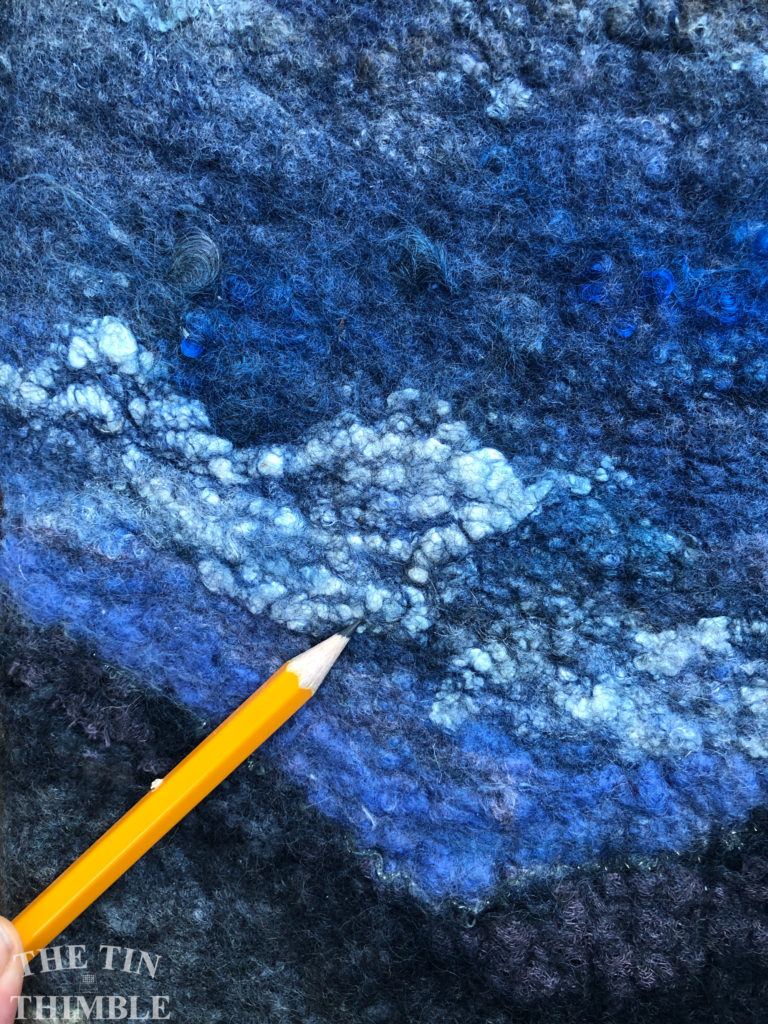
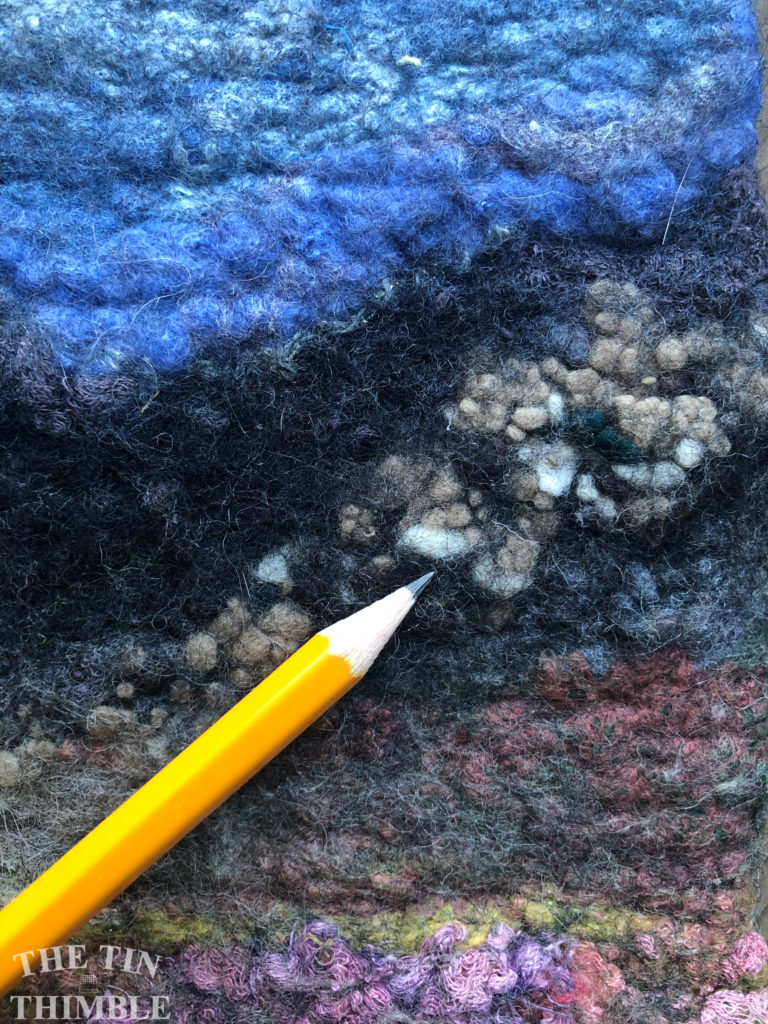
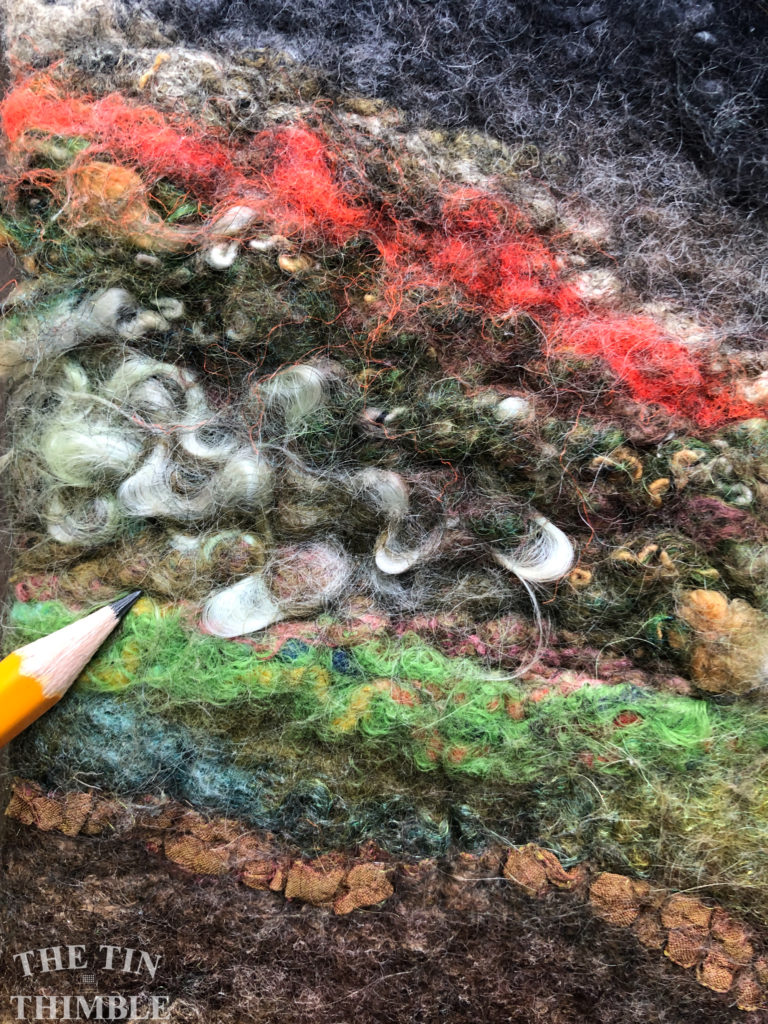
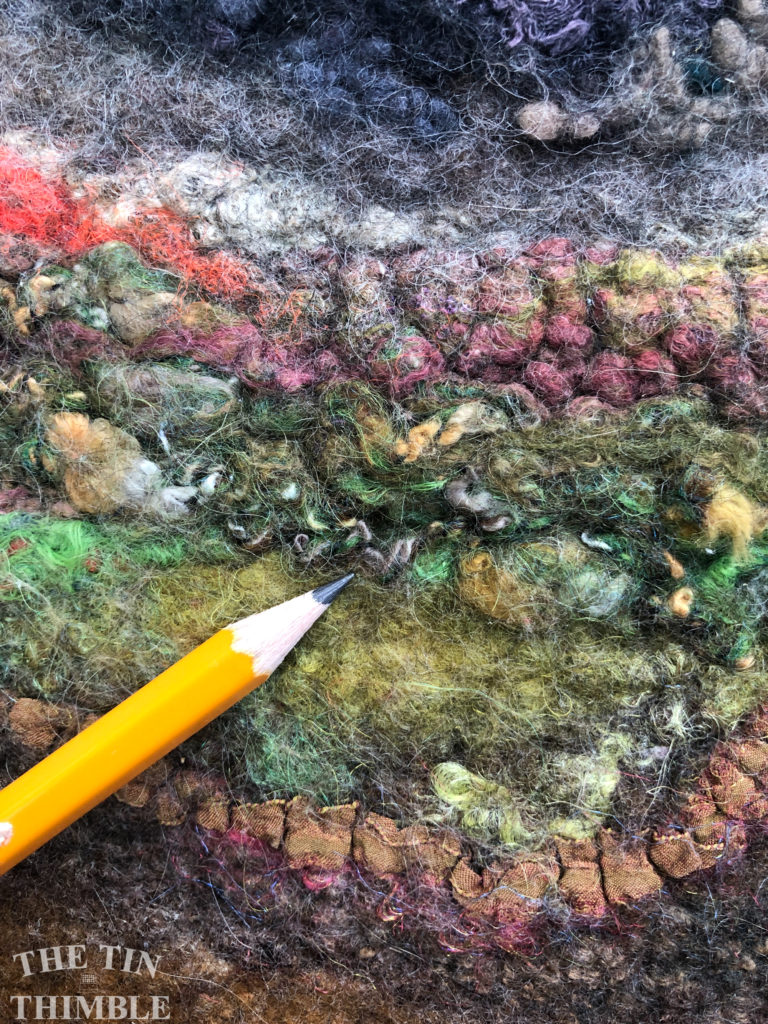
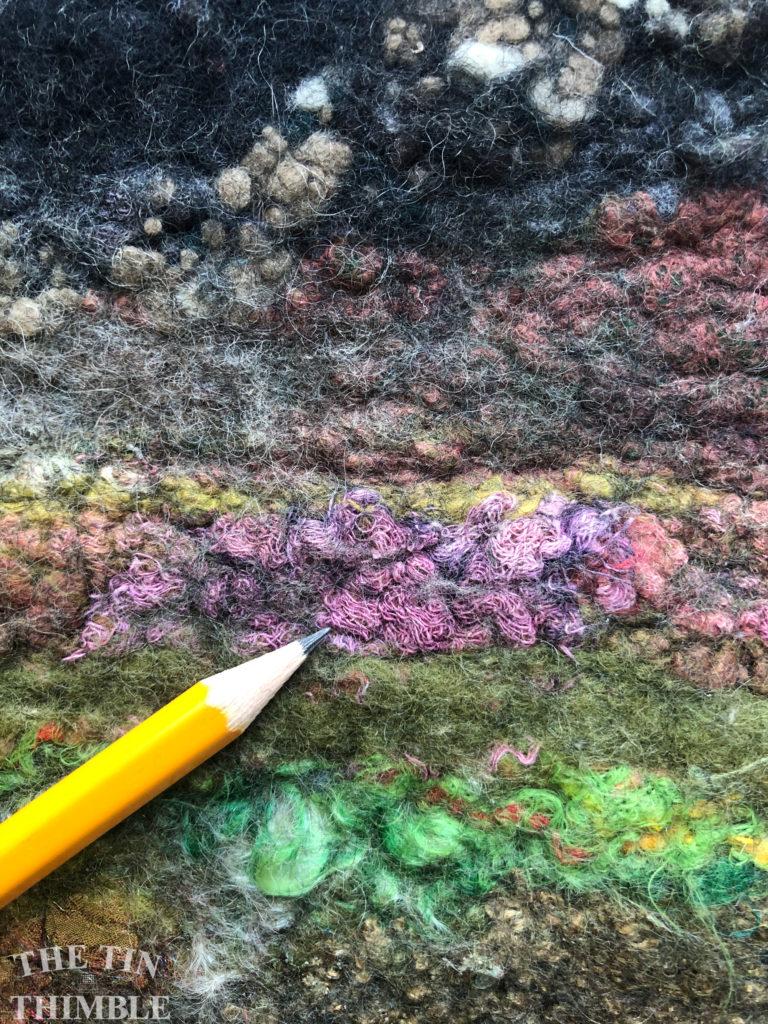
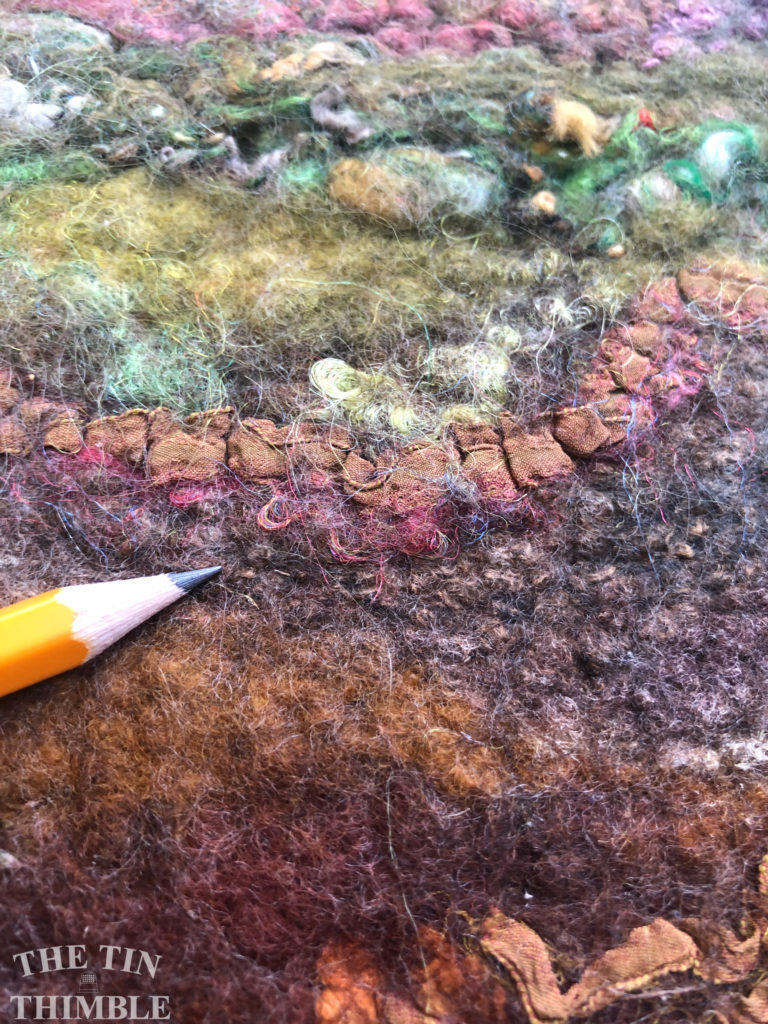
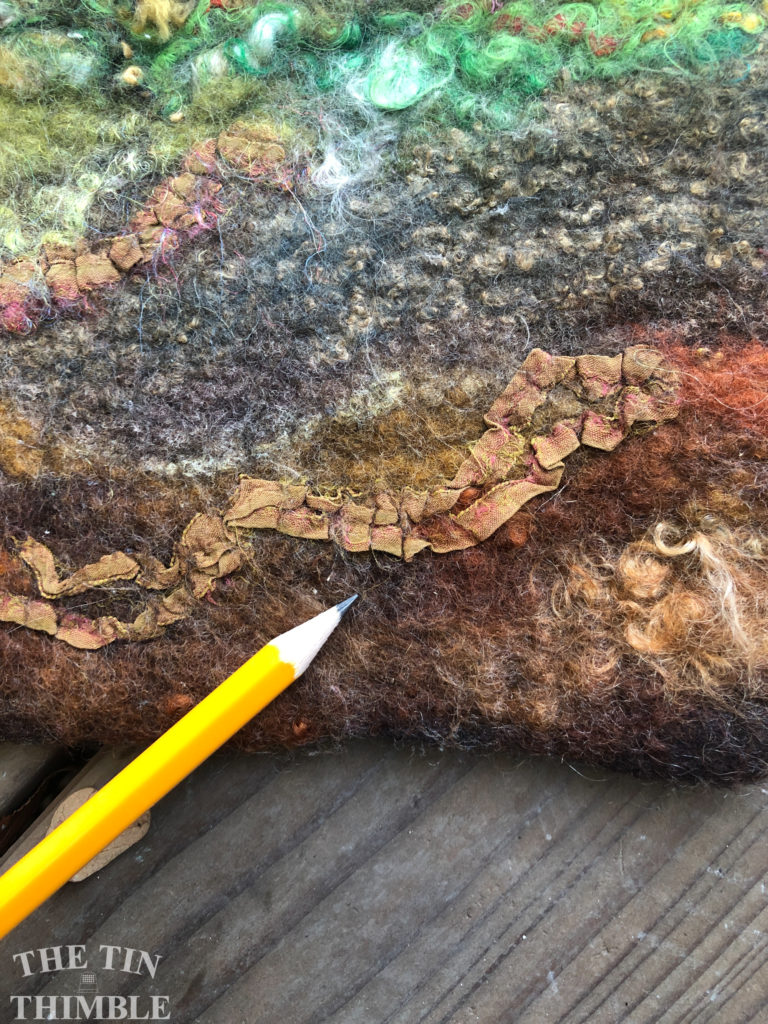
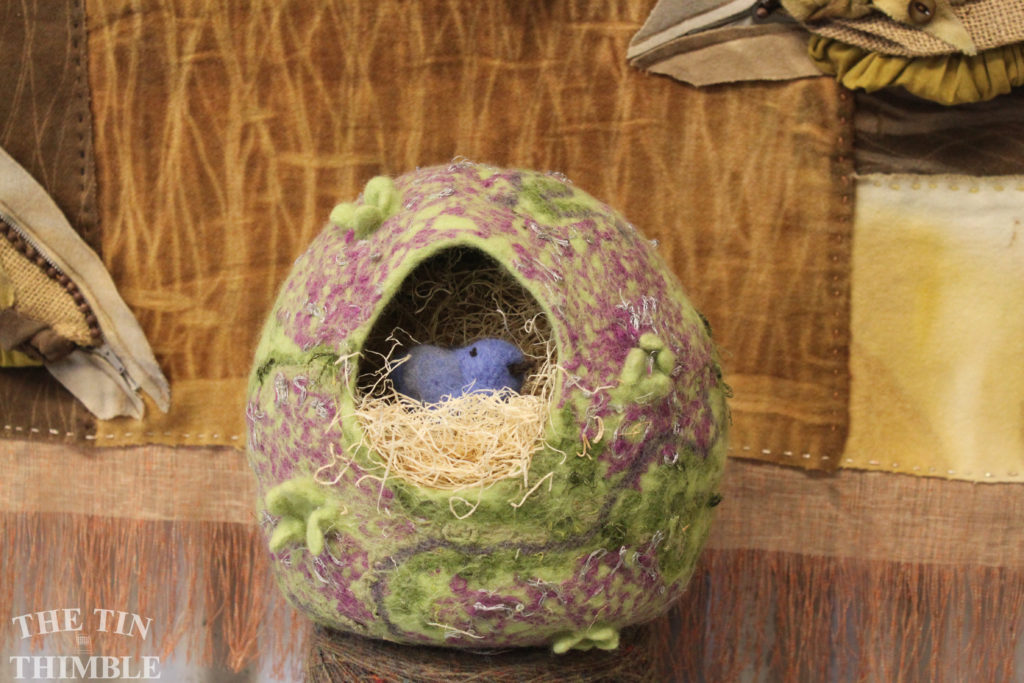
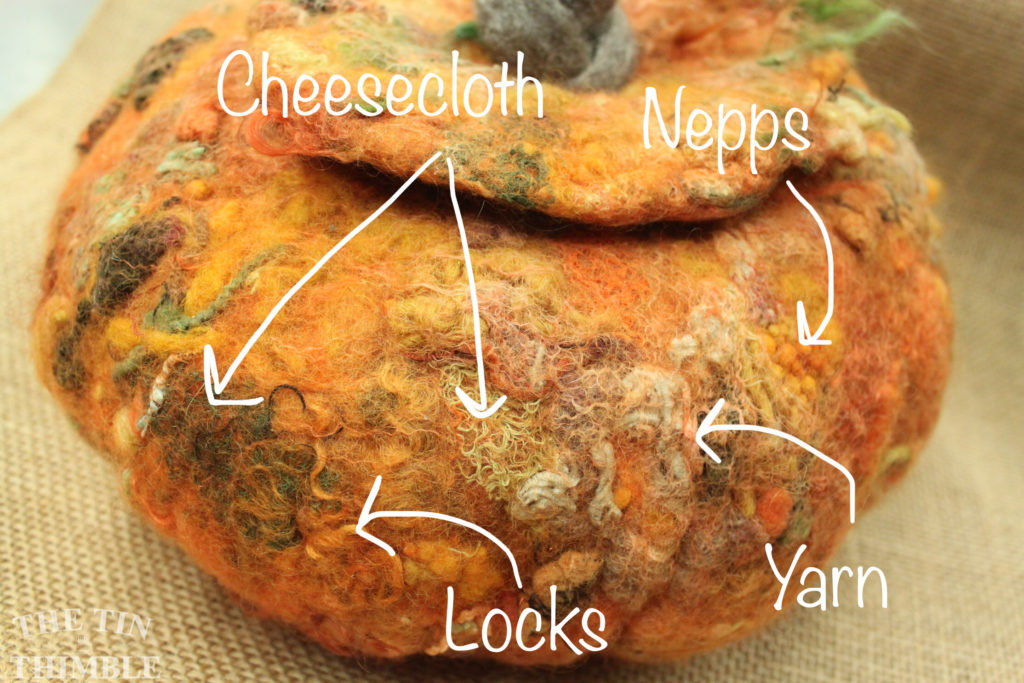
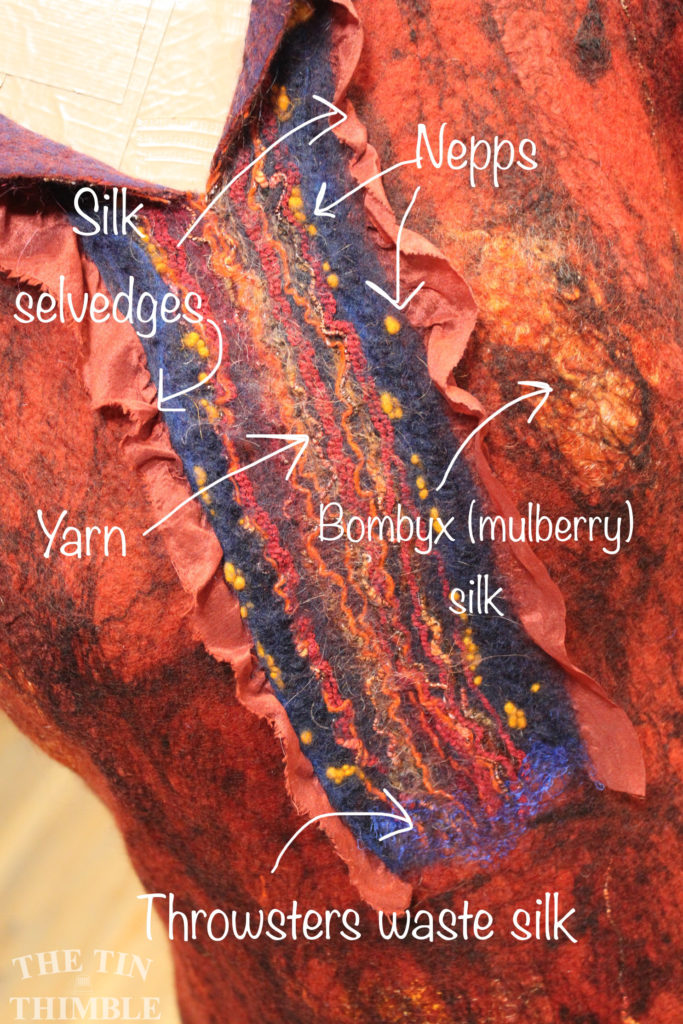
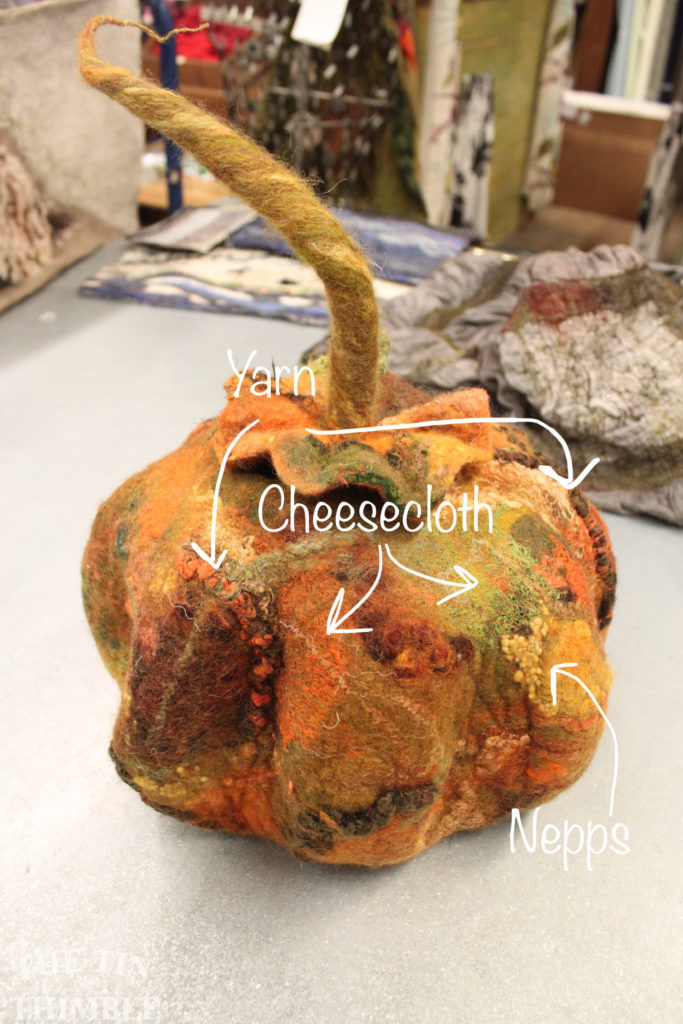
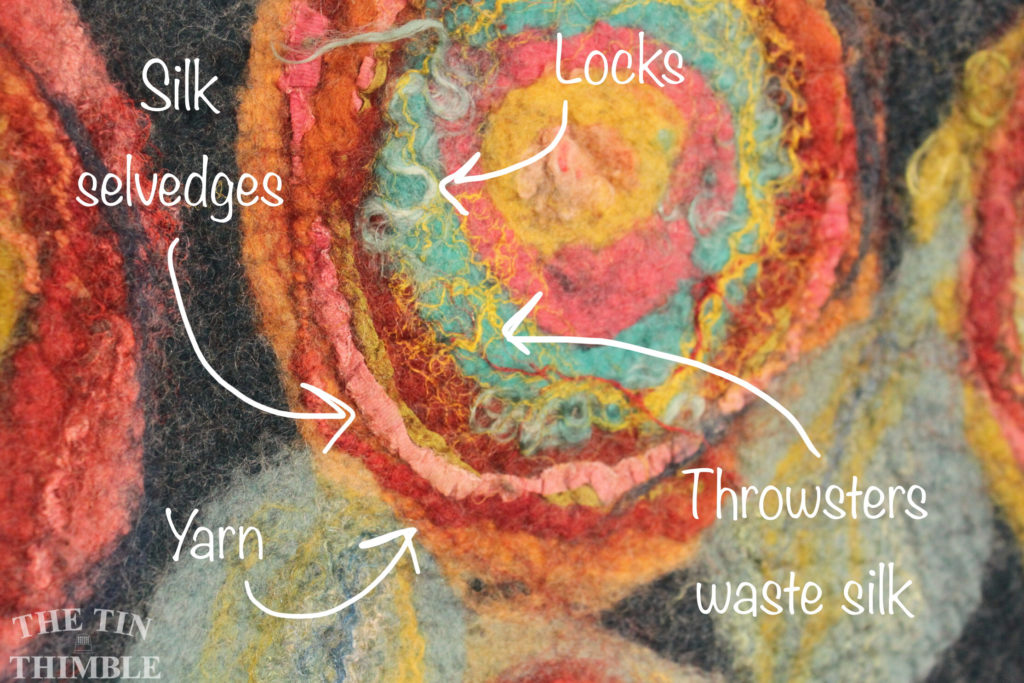
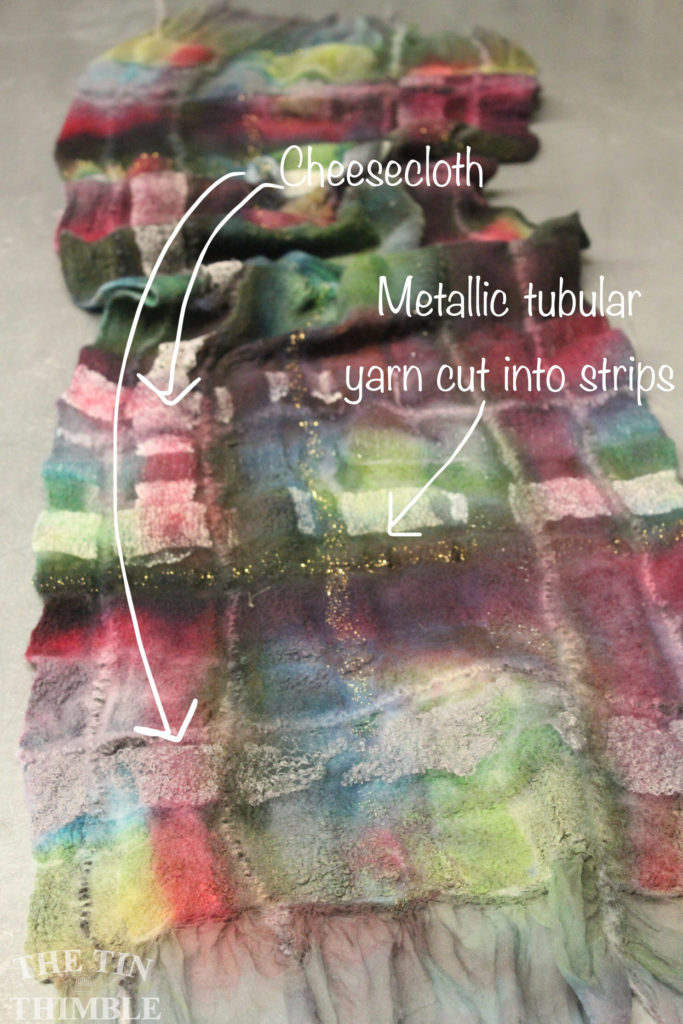
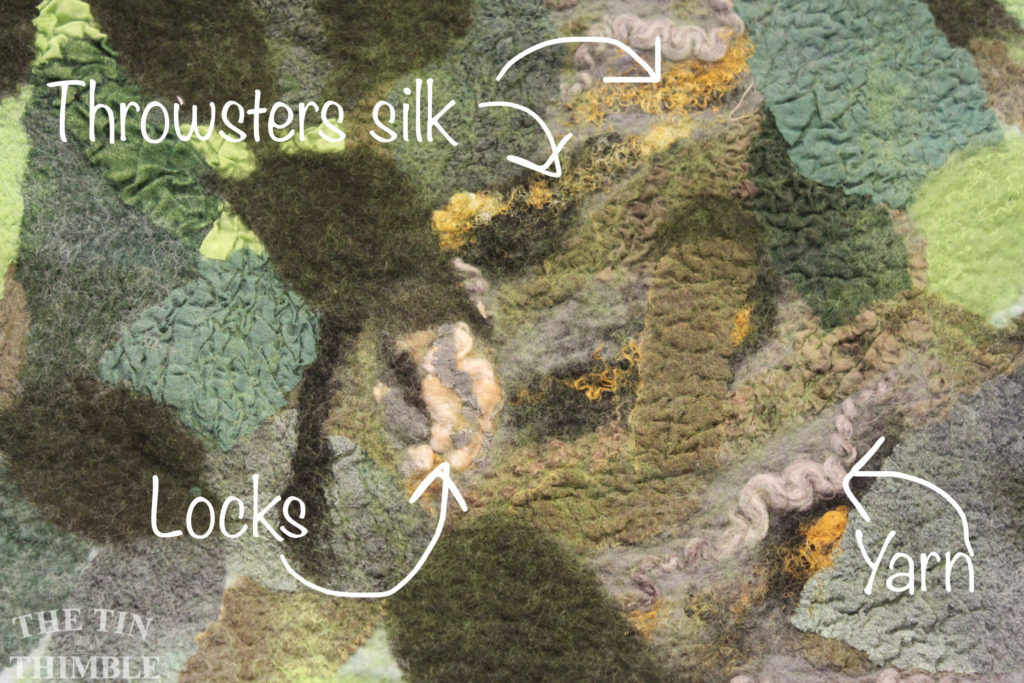
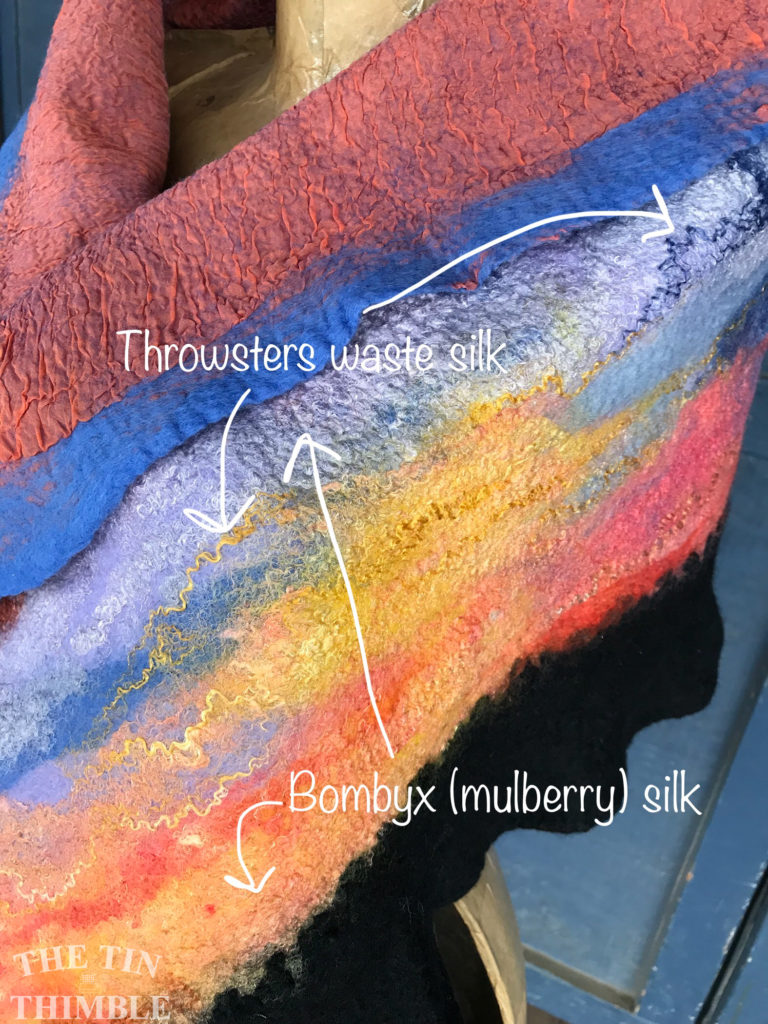

Great tips, Sharon, et al!! I love using all the embellishments I have gleaned from your Loomis store. These tips are timeless and I shall print them to place with my (overflowing) drawer of “foo foo” stuff!!
Hi Millie!
Aw, good. I’m glad you liked the info and will add it to your references! We hope you and yours are well. Miss you!
Please add me to your mailing list! Thank you. I’m a fairly new felter and it’s fun to look at all the ideas.
Hello Linda,
Will do! Thanks so much for reading.
Bonjour,
merci pour vos excellents conseils.
J’adore vos choix de couleurs !
Dans quelle région êtes vous?
Thanks for the tips.
Please add me to your mailing list. I have been felting for some time but am only starting to use embellishments.
Really enjoyed reading your tips & techniques for using embellishments. Will be trying some of them out soon! Thank you! Please add me to your mailing list.
This is the best Tips article I have ever seen. As a novice felter, this will be my bible.
Aw, thank you Marcy! That is so nice of you. We’re glad you found us. Happy felting!